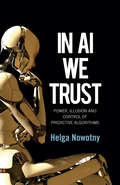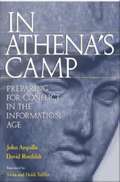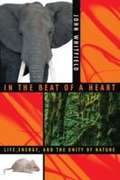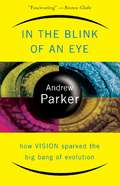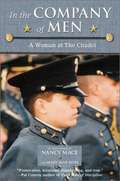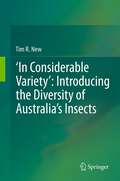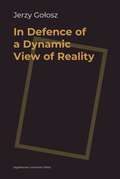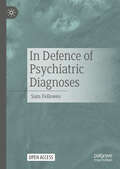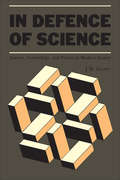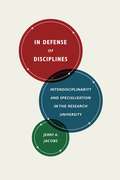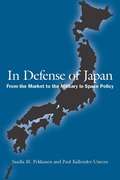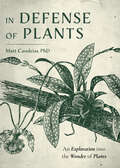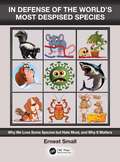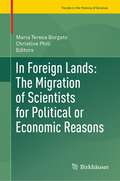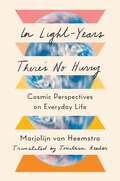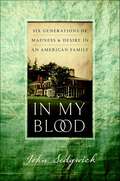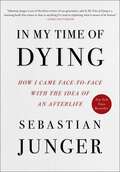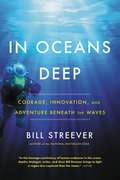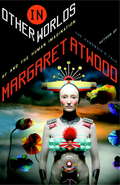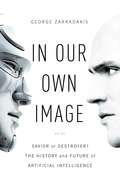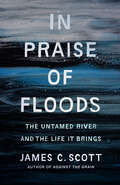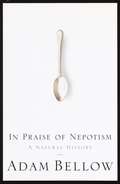- Table View
- List View
In AI We Trust: Power, Illusion and Control of Predictive Algorithms
by Helga NowotnyOne of the most persistent concerns about the future is whether it will be dominated by the predictive algorithms of AI – and, if so, what this will mean for our behaviour, for our institutions and for what it means to be human. AI changes our experience of time and the future and challenges our identities, yet we are blinded by its efficiency and fail to understand how it affects us. At the heart of our trust in AI lies a paradox: we leverage AI to increase our control over the future and uncertainty, while at the same time the performativity of AI, the power it has to make us act in the ways it predicts, reduces our agency over the future. This happens when we forget that that we humans have created the digital technologies to which we attribute agency. These developments also challenge the narrative of progress, which played such a central role in modernity and is based on the hubris of total control. We are now moving into an era where this control is limited as AI monitors our actions, posing the threat of surveillance, but also offering the opportunity to reappropriate control and transform it into care. As we try to adjust to a world in which algorithms, robots and avatars play an ever-increasing role, we need to understand better the limitations of AI and how their predictions affect our agency, while at the same time having the courage to embrace the uncertainty of the future.
In Athena's Camp
by John Arquilla David RonfeldtThe information revolution--which is as much an organizational as a technological revolution--is transforming the nature of conflict across the spectrum: from open warfare, to terrorism, crime, and even radical social activism. The era of massed field armies is passing, because the new information and communications systems are increasing the lethality of quite small units that can call in deadly, precise missile fire almost anywhere, anytime. In social conflicts, the Internet and other media are greatly empowering individuals and small groups to influence the behavior of states. Whether in military or social conflicts, all protagonists will soon be developing new doctrines, strategies, and tactics for swarming their opponents--with weapons or words, as circumstances require. Preparing for conflict in such a world will require shifting to new forms of organization, particularly the versatile, hardy, all-channel network. This shift will prove difficult for states and professional militaries that remain bastions of hierarchy, bound to resist institutional redesign. They will make the shift as they realize that information and knowledge are becoming the key elements of power. This implies, among other things, that Mars, the old brute-force god of war, must give way to Athena, the well-armed goddess of wisdom. Accepting Athena as the patroness of this information age represents a first step not only for preparing for future conflicts, but also for preventing them.
In The Beat Of A Heart: Life, Energy, And The Unity Of Nature
by John WhitfieldFor centuries, scientists have dreamt of discovering an underlying unity to nature. Science now offers powerful explanations for both the dazzling diversity and striking similarities seen in the living world. Life is complicated. It is truly the “entangled bank” that Charles Darwin described. But scientists are now discovering that energy is the unifying force that joins all life on Earth. Visionary biologists have advanced a new theory that explains how the natural world—from the tiniest amoeba to the greatest rain forest—is constructed, providing a fresh perspective on the essential interconnectivity of living systems. This revolutionary theory explains a variety of phenomena—helping us understand why a shrew eats its bodyweight in food each day, why a mammal’s heart beats about 1 billion times in its lifetime, why there are no trees as tall as the Eiffel Tower, and why more species live at the Earth’s equator than at its poles. By looking at how living things use energy, we can answer these and myriad other intriguing questions. In the Beat of a Heart combines biography, history, science and nature writing to capture the exciting advances— and the people who are making them—that are triggering a revolution as potentially important to biology as Newton’s insights were to physics.
In The Blink Of An Eye
by Andrew ParkerAbout 550 million years ago, there was literally an explosion of life forms, as all the major animal groups suddenly and dramatically appeared. Although several books have been written about this surprising event, known as the Cambrian explosion, none has explained why it occurred. Indeed, none was able to. Here, for the first time, Oxford zoologist Andrew Parker reveals his theory of this great flourishing of life. Parker's controversial but increasingly accepted "Light Switch Theory" holds that it was the development of vision in primitive animals that caused the explosion. Drawing on evidence not just from biology, but also from geology, physics, chemistry, history, and art, In the Blink of an Eye is the fascinating account of a young scientist's intellectual journey, and a celebration of the scientific method.
In The Blink Of An Eye
by Andrew ParkerAn Oxford University zoologist presents a broad audience treatment of his intriguing theory of vision as the on-switch for the Cambrian explosion in evolution. Lacks references. First published in hardcover in 2003 by Perseus Publishing. Annotation ©2004 Book News, Inc. , Portland, OR (booknews. com)
In The Blink Of An Eye
by Andrew ParkerAbout 550 million years ago, there was literally an explosion of life forms, as all the major animal groups suddenly and dramatically appeared. Although several books have been written about this surprising event, known as the Cambrian explosion, none has explained why it occurred. Indeed, none was able to. Here, for the first time, Oxford zoologist Andrew Parker reveals his theory of this great flourishing of life. Parker's controversial but increasingly accepted "Light Switch Theory" holds that it was the development of vision in primitive animals that caused the explosion. Drawing on evidence not just from biology, but also from geology, physics, chemistry, history, and art, In the Blink of an Eye is the fascinating account of a young scientist's intellectual journey, and a celebration of the scientific method.
In The Company Of Men: A Woman At The Citadel
by Nancy Mace Mary Jane Ross"Leaning forward until I could feel his breath on the back of my neck he began to rack me in an insidious, threatening manner. 'We all hate you. When are you going to leave? We hate you, do you hear me?'...On and on the voice went, and for the first time since I had come to the school, I was afraid, afraid and disgusted."<P> When Nancy Mace entered The Citadel, the United States government had just recently overturned the ruling that women were not allowed to enter the "Core of Cadets." Having grown up in a military family, Nancy was not unfamiliar with the harsh realities of military life. Her father, a brigadier general, had graduated from The Citadel and her older sister was a military graduate, but it would be Nancy's journey alone. And as many a knob has found out, life inside the dazzling white ramparts of this famous fortress is far from pleasant. Upon entering those grand gates, Nancy Mace soon found out that she wasn't just fighting the tradition of the corps, but the culture and city that surrounded it. Steeped in tradition and lore, the grand bastion known as El Cid is considered one of the South's most infamous and controversial institutions. Built in 1842, it has turned out a unique brand of Southern man -- and now woman. This is the true first-person account of a young woman's battle to be a part of the long gray line.
‘In Considerable Variety’: Introducing The Diversity Of Australia's Insects
by Tim R. NewThe book introduces basic entomology, emphasising perspectives on insect diversity important in conservation assessment and setting priorities for management, as a foundation for managers and others without entomological training or background. It bridges the gap between photographic essays on insect identification and more technical texts, to illustrate and discuss many aspects of taxonomic, ecological and evolutionary diversity in the Australian insect fauna, and its impacts in human life, through outlines of many aspects of insect natural history.
In Defence of a Dynamic View of Reality
by Jerzy GołoszThis collection of papers defends a dynamic view of reality which is founded on the assumption of the objective existence of the flow of time. The vindication makes use of a metaphysical theory of the flow of time developed by the author which is based on the notion of dynamic existence.
In Defence of Psychiatric Diagnoses
by Sam FellowesThis open access book makes a distinctive contribution by providing a novel defence of psychiatric diagnoses. It defends psychiatric diagnoses by portraying them as idealised models understood in a neo-Kantian sense. It reject accounts which see psychiatric diagnoses as biomedical entities or as natural kinds. Drawing upon this neo-Kantian approach to scientific models, the book provides a novel metaphysical account of what psychiatric diagnoses are and novel epistemological guidelines for constructing psychiatric diagnoses. Psychiatric diagnoses are portrayed as models which abstract away from particular aspects of particular people to create generalised models that are applicable to multiple people. In Defence of Psychiatric Diagnoses is essential reading for all scholars and researchers of the philosophy of science especially those focussing on the philosophy of psychiatry.
In Defence of Science: Science, Technology, and Politics in Modern Society
by Jack GroveScience holds a central role in the modern world, yet its complex interrelationships with nature, technology, and politics are often misunderstood or seen from a false perspective. In a series of essays that make extensive use of original work by sociologists, historians, and philosophers of science, J.W. Grove explores the roles and relationships of science in modern technological society. Modern Science can be viewed from four related perspectives. It is an expression of human curiosity – a passion to understand the natural world: what it is made of, how it is put together, and how it works. It is a body of practice – a set of ways of finding out that distinguish it from other realms of inquiry. It is a profession – a body of men and women owing allegiance to the pursuit of knowledge – and for those people, a career. And it is a prescriptive enterprise in that the increase of scientific understanding makes it possible to put nature to use in new kinds of technology. Each of these aspects of science is today the focus of critical scrutiny and, often, outright hostility. With many examples, Grove exposes the threats to science today: its identification with technology, its subordination to the state, the false claims made in its name, and the popular intellectual forces that seek to denigrate it as a source of human understanding and progress.
In Defense of Disciplines: Interdisciplinarity and Specialization in the Research University
by Jerry A. JacobsCalls for closer connections among disciplines can be heard throughout the world of scholarly research, from major universities to the National Institutes of Health. "In Defense of Disciplines" presents a fresh and daring analysis of the argument surrounding interdisciplinarity. Challenging the belief that blurring the boundaries between traditional academic fields promotes more integrated research and effective teaching, Jerry Jacobs contends that the promise of interdisciplinarity is illusory and that critiques of established disciplines are often overstated and misplaced. Drawing on diverse sources of data, Jacobs offers a new theory of liberal arts disciplines such as biology, economics, and history that identifies the organizational sources of their dynamism and breadth. Illustrating his thesis with a wide range of case studies including the diffusion of ideas between fields, the creation of interdisciplinary scholarly journals, and the rise of new fields that spin off from existing ones, Jacobs turns many of the criticisms of disciplines on their heads to mount a powerful defense of the enduring value of liberal arts disciplines. This will become one of the anchors of the case against interdisciplinarity for years to come.
In Defense of Japan: From the Market to the Military in Space Policy
by Saadia M. Pekkanen Paul Kallender-UmezuIn Defense of Japan provides the first complete, up-to-date, English-language account of the history, politics, and policy of Japan's strategic space development. The dual-use nature of space technologies, meaning that they cut across both market and military applications, has had two important consequences for Japan. First, Japan has developed space technologies for the market in its civilian space program that have yet to be commercially competitive. Second, faced with rising geopolitical uncertainties and in the interest of their own economics, the makers of such technologies have been critical players in the shift from the market to the military in Japan's space capabilities and policy. This book shows how the sum total of market-to-military moves across space launch vehicles, satellites and spacecraft, and emerging related technologies, already mark Japan as an advanced military space power.
In Defense of Plants: An Exploration into the Wonder of Plants
by Matt Candeias PhDCultivate Inner Peace Through Positive Affirmations and Spiritual Meditation“52 Ways to Live the Course in Miracles is a compact rendition of how to live with love and forgiveness at the center of our lives." ─Allyson Gracie, Retailing Insight#1 Best Seller in SpiritualismFind the path to inner peace through a weekly guide of spiritual meditations and positive affirmations.Use Karen Casey’s 52 positive affirmations and meditations to find inner peace. We all face struggles that can leave us feeling broken and hopeless. But peace and healing are always available to us if we are open to them. Karen Casey is a beloved author who has helped millions onto the road to recovery with her inspirational self-help and meditation writings. In this inspirational book, Karen takes readers on a journey towards peaceful living by sharing how she has found serenity in her own life. Karen teaches readers that the goal is not perfection, but rather progress towards creating a life of love and peace. Cultivate a simpler, slower, more love-filled life. When Karen Casey was struggling with addiction, she found life-changing inspiration in Helen Schucman’s book, A Course in Miracles. In 52 Ways to Live the Course in Miracles, she shares the ideas she discovered in Helen Schucman's book and the spirituality that we can all bring to our own lives.Find inside:Meditations and affirmations that lead to a simpler, slower lifeInsights into Helen Schucman’s A Course in MiraclesStories of the author’s own struggles and triumphs on her path to healingIf you enjoyed reading other books like Practicing Mindfulness, The Untethered Soul Guided Journal, or A Year of Mindfulness, then you’ll love 52 Ways to Live the Course in Miracles.
In Defense of the World’s Most Despised Species: Why we love some species but hate most, and why it matters
by Ernest SmallSome animals and plants injure or kill millions of people annually, others cause trillions of dollars in property damage and loss. Such harmful species are understandably hated. However, the vast majority of the planet’s millions of species are disliked simply because of how they look and act. This bias is endangering numerous species that play important roles in maintaining both the natural ecosystems and the human economies of the world. In Defense of the World’s Most Despised Species examines the psychological motivations that lead people to make judgments about the attractiveness of species, noting the overwhelming importance of visual cues. It describes in considerable detail the physical and behavioral traits of species that lead us to love or hate them. Full color illustrations throughout present beautiful, charming animals and plants, species that seem loathsome, behavior of people in relation to such divergent species and their characteristics, and numerous explanatory diagrams of relevant biological and psychological phenomena. The aim of this book is to give readers insights into how we humans arrive at biased judgments and to promote the welfare of valuable, albeit sometimes unlovable animals and plants that consequently suffer from discrimination. Many of the ugliest, most disgusting, and feared species, such as vultures, toads, hyenas, sharks, spiders, and even the vast majority of cockroaches, in reality are some of our most valuable friends. Features Theme of the book – human preferences for and against species – is novel, scarcely examined to date. Multidisciplinary analysis, especially psychology, biological conservation science, and ecology, as well as philosophy, agriculture, urban planning, human health, and law. Text is accessible, user-friendly, concise, and well-organized, making numerous complex topics comprehensible, readable not only by specialists, but also by students and the educated layperson. Includes over 2,000 high-quality, entertaining, and informative color figures.
In Foreign Lands: The Migration of Scientists for Political or Economic Reasons (Trends in the History of Science)
by Maria Teresa Borgato Christine PhiliThis proceedings volume collects the stories of mathematicians and scientists who have spent and developed parts of their careers and life in countries other than those of their origin. The reasons may have been different in different periods but were often driven by political or economic circumstances: The lack of suitable employment opportunities in their home countries, adverse political systems, and wars have led to the emigration of scientists. The volume shows that these movements have played an important role in spreading scientific knowledge and have often changed the scientific landscape, tradition and future of studies and research fields.The book analyses in particular: aspects of Euler’s, Lagrange’s and Boscovich’s scientific biographies, migrations of scientists from France, Spain and Greece to Russia in the eighteenth and nineteenth centuries, and from Russia to France in the twentieth century, exiles from Italy before the Italian Risorgimento, migrations inside Europe and the escape of mathematicians from Nazi-fascist Europe, between the two World Wars, as well as the mobility of experts around the world. It includes selected contributions from the symposium In Foreign Lands: The Migration of Scientists for Political or Economic Reasons held at the Conference of the International Academy of the History of Science in Athens (September 2019).
In Light-Years There's No Hurry: Cosmic Perspectives on Everyday Life
by Marjolijn van HeemstraHow seeing Earth through the eyes of an astronaut brings new wonder and meaning to life on our planet. One stifling summer night, the poet and journalist Marjolijn van Heemstra lay awake, unable to sleep—like so many of us feeling anxious and alienated, deeply exhausted yet restless. Amid the suffocating stream of daily obligations, the clamor of notifications and increasingly dismal headlines, she longed for a way to rise above the frenzy, for a renewed sense of meaning and connection. Then she learned about the overview effect—a permanent shift in consciousness many astronauts experience when beholding Earth from outside the atmosphere—and wondered: could the perspective of outer space offer the internal space she sought? The lyrical account of van Heemstra’s yearlong quest to experience the overview effect on Earth, In Light-Years There’s No Hurry invites us to lift our gaze above eye level and discover our connections with the cosmos, our planet, and each other. We follow as van Heemstra’s cosmic awareness expands and she finds herself feeling simultaneously lighter and more grounded. Compared with the complexity of the universe, daily life on Earth begins to seem more manageable, while understanding the improbability of our collective existence gives her new patience and tenderness for her neighbors. The grand rhythms of light-years and eons become a source of restoration and relief—a comforting, necessary reminder to slow down and zoom out. Contemplating the solace a cosmic perspective offers in our chaotic, divided world, In Light-Years There’s No Hurry is a moving meditation on what it is to be human amid the vastness of the universe.
In My Backyard
by Margriet RuursFrom the singing of little wrens in spring to paper wasps building their nests in summer; from baby bats drinking mother’s milk in fall to baby possums climbing into mother’s pouch in winter, In My Backyard celebrates nature and backyard animals through the seasons. Wildlife artist Ron Broda’s detailed paper-sculpture art beautifully complements Margriet Ruurs’ lyrical text, and young readers will discover a captivating variety of animals and insects.Find the ladybug in each illustration, along with a hidden animal, which becomes featured on the next page. A detailed legend and helpful hints on how to turn your own backyard into an inviting place for animals to live make this book a must-have for wildlife and nature lovers alike.
In My Blood: Six Generations of Madness & Desire in an American Family
by John SedgwickWhile working on his second novel, John Sedgwick spiraled into a depression so profound that it very nearly resulted in suicide. An author acclaimed for his intimate literary excursions into the rarified, moneyed enclave of Brahmin Boston, he decided to search for the roots of his malaise in the history of his own storied family—one of America's oldest and most notable. Following a bloodline that travels from Theodore Sedgwick, compatriot of George Washington and John Adams, to Edie Sedgwick, Andy Warhol's tragic muse, John Sedgwick's very personal journey of self-discovery became something far greater: a spellbinding study of the evolution of an extraordinary American family.
In My Time of Dying: How I Came Face to Face with the Idea of an Afterlife
by Sebastian JungerA near-fatal health emergency leads to this powerful reflection on death—and what might follow—by the bestselling author of Tribe and The Perfect Storm.For years as an award-winning war reporter, Sebastian Junger traveled to many front lines and frequently put his life at risk. And yet the closest he ever came to death was the summer of 2020 while spending a quiet afternoon at the New England home he shared with his wife and two young children. Crippled by abdominal pain, Junger was rushed to the hospital by ambulance. Once there, he began slipping away. As blackness encroached, he was visited by his dead father, inviting Junger to join him. &“It&’s okay,&” his father said. &“There&’s nothing to be scared of. I&’ll take care of you.&” That was the last thing Junger remembered until he came to the next day when he was told he had suffered a ruptured aneurysm that he should not have survived. This experience spurred Junger—a confirmed atheist raised by his physicist father to respect the empirical—to undertake a scientific, philosophical, and deeply personal examination of mortality and what happens after we die. How do we begin to process the brutal fact that any of us might perish unexpectedly on what begins as an ordinary day? How do we grapple with phenomena that science may be unable to explain? And what happens to a person, emotionally and spiritually, when forced to reckon with such existential questions? In My Time of Dying is part medical drama, part searing autobiography, and part rational inquiry into the ultimate unknowable mystery.
In Oceans Deep: Courage, Innovation, and Adventure Beneath the Waves
by Bill StreeverIn the spirit of Bill Bryson and Ian Frazier comes this fascinating examination of our past, present, and future beneath the waves.In an age of unprecedented exploration and innovation, our oceans remain largely unknown, and endlessly fascinating: full of mystery, danger, beauty, and inspiration. Bill Streever-a longtime deep-sea diver himself-has masterfully woven together the science and history of Earth's last remaining frontier: the sea. In Oceans Deep celebrates the daring pioneers who tested the limits of what the human body can endure under water: . free divers able to reach 300 feet on a single breath; engineers and scientists who uncovered the secrets of decompression; teenagers who built their own diving gear from discarded boilers and garden hoses in the 1930s; saturation divers who lived under water for weeks at a time in the 1960s; and the trailblazing men who voluntarily breathed experimental gases at pressures sufficient to trigger insanity.Tracing both the little-known history and exciting future of how we travel and study the depths, Streever's captivating journey includes seventeenth-century leather-hulled submarines, their nuclear-powered descendants, a workshop where luxury submersibles are built for billionaire clients, and robots capable of roving unsupervised between continents, revolutionizing access to the ocean. In this far-flung trip to the wild, night-dark place of shipwrecks, trapped submariners, oil wells, innovative technologies, and people willing to risk their lives while challenging the deep, we discover all the adventures our seas have to offer-and why they are in such dire need of conservation.
In Other Worlds: SF and the Human Imagination
by Margaret AtwoodNote: The electronic version of this title contains over thirty additional, illuminating eBook-exclusive illustrations by the author.At a time when speculative fiction seems less and less far-fetched, Margaret Atwood lends her distinctive voice and singular point of view to the genre in a series of essays that brilliantly illuminates the essential truths about the modern world. This is an exploration of her relationship with the literary form we have come to know as "science fiction," a relationship that has been lifelong, stretching from her days as a child reader in the 1940s, through her time as a graduate student at Harvard, where she worked on the Victorian ancestor of the form, and continuing as a writer and reviewer. This book brings together her three heretofore unpublished Ellmann Lectures from 2010: "Flying Rabbits," which begins with Atwood's early rabbit superhero creations, and goes on to speculate about masks, capes, weakling alter egos, and Things with Wings; "Burning Bushes," which follows her into Victorian otherlands and beyond; and "Dire Cartographies," which investigates Utopias and Dystopias. In Other Worlds also includes some of Atwood's key reviews and thoughts about the form. Among those writers discussed are Marge Piercy, Rider Haggard, Ursula Le Guin, Ishiguro, Bryher, Huxley, and Jonathan Swift. She elucidates the differences (as she sees them) between "science fiction" proper, and "speculative fiction," as well as between "sword and sorcery/fantasy" and "slipstream fiction." For all readers who have loved The Handmaid's Tale, Oryx and Crake, and The Year of the Flood, In Other Worlds is a must. From the Hardcover edition.
In Our Own Image: Savior or Destroyer? The History and Future of Artificial Intelligence
by George ZarkadakisA timely and important book that explores the history and future, as well as the societal and ethical implications, of Artificial Intelligence as we approach the cusp of a fourth industrial revolution Zarkadakis explores one of humankind's oldest love-hate relationships—our ties with artificial intelligence, or AI. He traces AI's origins in ancient myth, through literary classics like Frankenstein, to today's sci-fi blockbusters, arguing that a fascination with AI is hardwired into the human psyche. He explains AI's history, technology, and potential; its manifestations in intelligent machines; its connections to neurology and consciousness, as well as—perhaps most tellingly—what AI reveals about us as human beings. In Our Own Image argues that we are on the brink of a fourth industrial revolution—poised to enter the age of Artificial Intelligence as science fiction becomes science fact. Ultimately, Zarkadakis observes, the fate of AI has profound implications for the future of science and humanity itself.
In Praise of Floods: The Untamed River and the Life It Brings (Yale Agrarian Studies Series)
by James C. ScottJames C. Scott reframes rivers as alive and dynamic, revealing the consequences of treating them as resources for our profit Rivers, on a long view, are alive. They are born; they change; they shift their channels; they forge new routes to the sea; they move both gradually and violently; they can teem (usually) with life; they may die a quasi-natural death; they are frequently maimed and even murdered. It is the annual flood pulse—the brief time when the river occupies the floodplain—that gives a river its vitality, but it is human engineering that kills it, suppressing the flood pulse with dams, irrigation, siltation, dikes, and levees. In demonstrating these threats to the riverine world, award-winning author James C. Scott examines the life history of a particular river, the Ayeyarwady (Irrawaddy) of Burma, the heartland and superhighway of Burman culture. Scott opens our understanding of rivers to encompass their entirety—tributaries, wetlands, floodplains, backwaters, eddies, periodic marshlands, and the assemblage of life forms dependent on rivers for their existence and well-being. For anyone interested in the Anthropocene and the Great Acceleration, rivers offer a striking example of the consequences of human intervention in trying to control and domesticate a natural process, the complexity and variability of which we barely understand.
In Praise of Nepotism: A Natural History
by Adam BellowThe causes and effects of nepotism throughout human history.
